ONCE you’re in, you can never leave without payment in blood or cash.
Women are treated as second-class citizens — even branded like dogs with the words “property” scrawled across their backs.
And police warn that another term for our Outlaw Motorcycle Gangs may as well be Ammo Clubs are they increasingly stockpile guns “close to hand” for “inter-gang conflicts”.
They live by a “code of silence”, but The Daily Telegraph can today reveal the contents of a police dossier claiming to detail the secret inner workings of our bikie gangs.
Based on decades of intercepted phone calls, police interviews, debriefs from gang moles and information gleaned from hundreds of search warrants — this is the definitive picture of the “Way of the Bikie”.
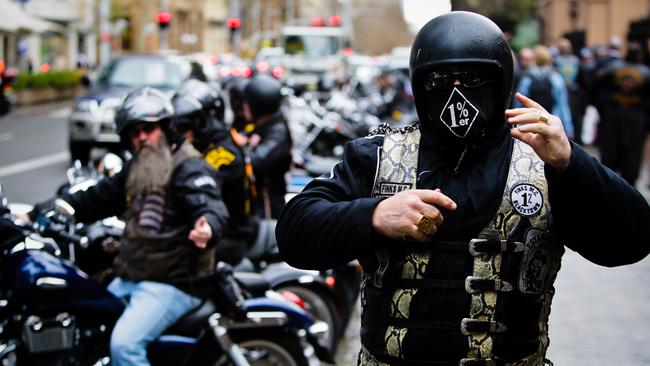
It comes from a 400-page dossier tendered to court as part of proceedings relating to a violent turf war between the Finks and the Nomads in the Hunter Region.
Police are seeking to have landmark crime prevention orders imposed on five high-ranking Nomads and five Finks in a bid to end violent shootings across the Hunter putting the public at risk.
If the orders are granted by the courts, the 10 men will not be allowed to associate with any member of any gang, enter licensed premises in NSW or travel in vehicles at night for the next 12 months.
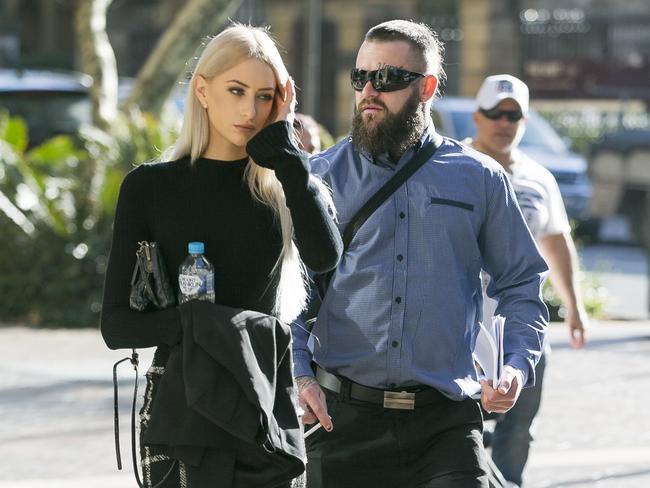
They will also not be allowed to use any encrypted communication — such as Snapchat, WhatsApp, Wickr and Hushmail — and will have to surrender their phones and passwords to police whenever requested.
After two separate hearings in the NSW Supreme Court Justice David Davies is expected to hand down his decision on whether the orders should be granted in coming weeks.
Put together by veteran detectives attached to the high-profile Strike Force Raptor, the dossier claims to unravel the psychology behind “murder, kidnapping, very serious assaults and commercial drug trafficking”.
THE HISTORY
Outlaws bikie gangs first came about at the end of WWII — a way for returned servicemen to feel like part of a social group.
US clubs started to replicate the hierarchical structure of the military, with clear lines of command.
After a wild Californian brawl in 1947 the president of the American Motorcycle Association said that 99 per cent of motorcyclists were law abiding while 1 per cent were “trouble makers”. And from this the concept of the outlaw bikie was born with the 1% symbol its catchcry.

HOW DO YOU GET IN?
You start life as a “Nominee” where you’re stuck doing “menial duties” for full members.
You’re entitled to wear a portion of the OMCGs “three piece patch”, but you don’t have the rights of a Full Member.
At the very least you’re higher than a “Hangaround” — the term for a person with access to the clubhouse, but not much else.
BLACK UHLANS CLUBHOUSE GUTTED BY FIRE
NOMADS V FINKS: HUNTER TURF BATTLE ESCALATES
THE FULL RAPTOR SERIES: START CHAPTER ONE HERE — THE COPS WHO CRUSHED THE BIKIES
A nominee has to go through a series of tests that usually takes up to 24 months.
To be a member you need the support of a strong majority, if not unanimous support, of the full Members.
Then you can receive a “Full Patch”.
But according to the dossier, once you’re in you’re in there’s no leaving — unless you pay with blood or cash.
In the case of the Finks, a man can potentially leave on good terms if they “surrender” a motorcycle or pay $10,000.
STRIPPERS, MOLLS & OLD LADIES
Even a motorcycle is more valuable to a bikie than a woman.
And females can never be actual members.
The court documents claim bikie women are treated as “property”, in some cases even branded like dogs.
For example, the wife of a Coffin Cheaters gang member has a huge tattoo scrawled across her back which reads: “The Property of Mark Hinchcliff”.
Another partner of a Life and Death gang member wears a jacket which says “Property of Steve”.
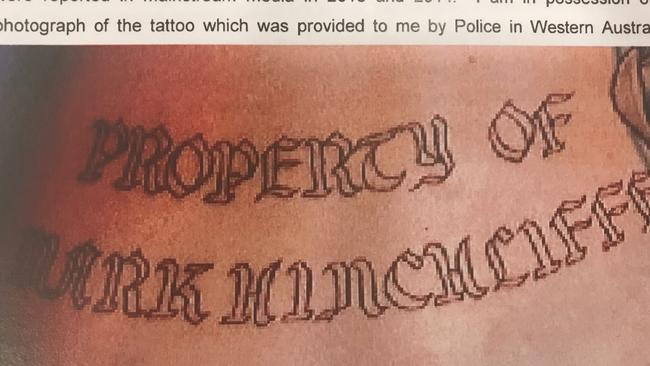
“It is my experience that in that particular culture, women are generally regarded and treated as secondary to the organisation, members and motorcycles,” Detective Sergeant Groenewegen says.
There is a hierarchy among bikie women.
An Old Lady — a woman worthy of marriage — is at the very top.
There are strict rules too about how a woman can behave too.
“It has been my experience that a woman in a relationship with a Member is ‘off limits’ to anyone else in the club, until such time as the relationship ends,” the dossier says.
“Many OMCGs regard a relationship with another Member’s woman as an offence as serious as disrespect to the three-piece patch.
“In many clubs it is akin to, and described in some of the rules as, stealing.”
There are also rules that “dictate a designated period before which a woman previously in a relationship is allowed to go to the clubhouse again or before which other Members may court her affections,” the dossier says.
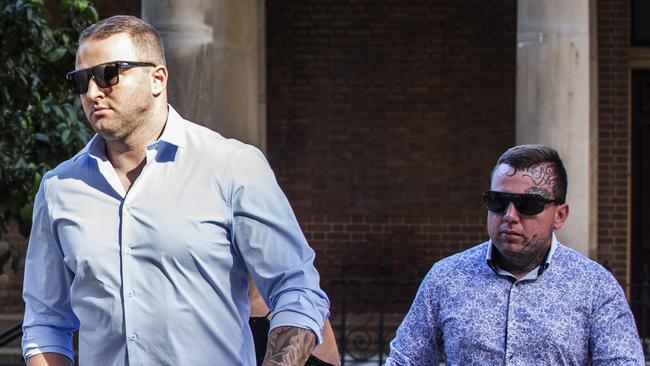
The Nominee Rules of the Lone Wolf OMCG instruct prospective members to “keep your women in line” and warns against “undue harassment of other brothers women”.
Domestic violence is also rife.
Strike Force Raptor detectives claim hundreds of bikies are before the courts facing apprehended violence orders.
And that’s just the tip of the iceberg. Police suspect “cone of silence” means abuse is under reported.
Many women are simply too scared to speak up too.
“In OMCG subculture (it) is acceptable to assault or otherwise control women who are of secondary concern and status,” the dossier says.
THE POWER OF THE PATCH
The bikie’s “patch” is central to the identity of gang members — with its “intrinsic significance” so major that during violent confrontations there are even attempts by warring parties to capture an adversary’s colours.
The patch must be “earned” and reflects “exclusivity and entitlement”.
“The patch carried an implied message of power … (it) also implies a threat of violence,” the dossier says.
One of the biggest crimes a bikie can commit is “patching over” to another gang.
The worst bikie bloodshed in NSW came about because of a “patching over”.
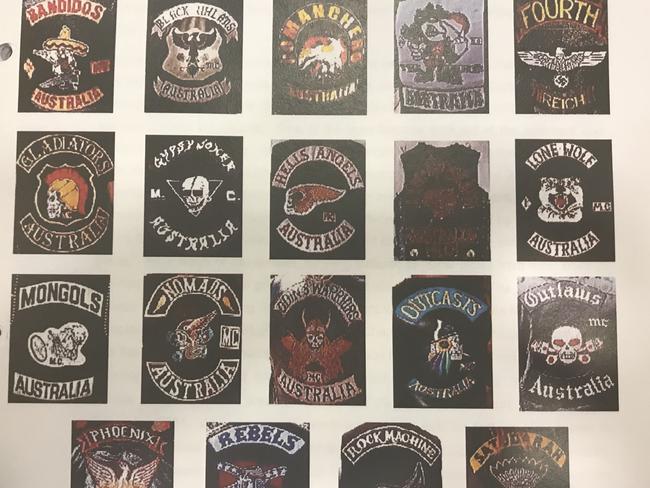
On Father’s Day in 1984, seven people were killed at Milperra after several members of the Comanchero “patched over” to the Bandidos.
More recently, a turf war between the Nomads and Hells Angels broke out in 2011 due to the patching over of a man named Wissam Amer.
A similar war broke out about the same time when Nomads bikie Jamie Zammit patched over to the Hells Angels.
“The patch is of such intrinsic significance to an OMCG member that disrespect to a patch is a cause for violent confrontation between rival gangs, Detective Sergeant Groenewegen says.
FEEDER CLUBS
The bikies believe in “power in numbers” — which is why many of the biggest gang’s allow smaller clubs to associate with them.
Known as “support”, “feeder” or even “social” clubs, these gangs enjoy the protections of the big gangs but they’re not officially members.
Some of the biggest support clubs include The Fat Mexican Support Club, The Mayhem Hit Squad and the Sixty Sixers.
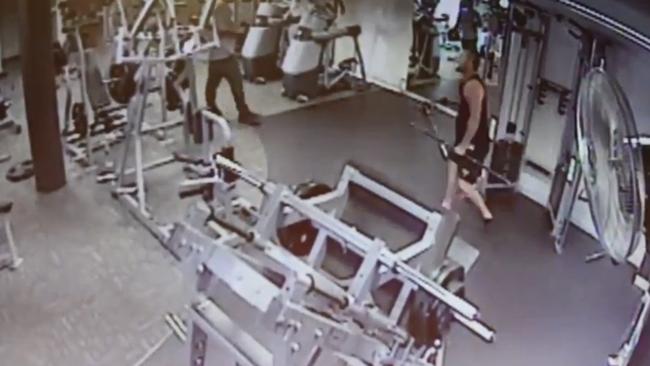
The go on “organised runs” to show strength and are sometimes allowed to hang at the clubhouses but they are not subjected to the same rules, regulation — or membership fees.
Support clubs often wear patches represent their allegiance and examples of these clubs include the Black Pistons who support the Outlaws bikie gang; the Red Devils who prop up the Hells Angels and the Sixty Sixers who are affiliated with The Finks.
Groups with a looser association to bigger clubs act more like petty street gangs.
These are called “feeder” groups.
BIKIE SLANG & SYMBOLISM
The gang code is almost like another language — only spoken and understood by those in the know.
The number “13” is a “very common” symbol because it actually represents the letter “M”.
This is important as M can mean something as simple as “motorcycle” or as sinister as “methamphetamine”.
Acronyms are important too.
Bikies will often boast tattoos like FTW for the saying “F*** the World” or EFO for “Everyone F*** Off”.
The mottos “Brother’s Keeper” and “One In, All In” are popular too.
“(It) advertises the concept of an organised group whose membership is invested in protecting the exclusivity of membership. It often implies, albeit subtlety, the acceptance in the OMCG environment that violence is acceptable, and often expected, in response to any situation,” the affidavits say.
TIMELINE OF CRIME:
THE RULES
Most gangs have their own set of “rules”.
The rules vary but often point to what requirements must be met to “form a chapter”, responsibilities about national voting, fees, roles of nominees and probationers, club runs and how to resolve disputes.
In 1999 Comanchero Peter Ledger “broke the rules” and was kidnapped and beaten so severely he died as a result of his injuries.
One of the rules is that bikie’s partners are “off limits” to other members so when the Rebels Sergeant-at-Arms of the Blacktown Chapter had an affair with another member’s partner — a harsh punishment followed.
The Rebels member was beaten with a cricket bat and police believe there were plans to kill him after they discovered “corpse disposal equipment” which included a pick, shovel, forensic overalls and flammable liquid.
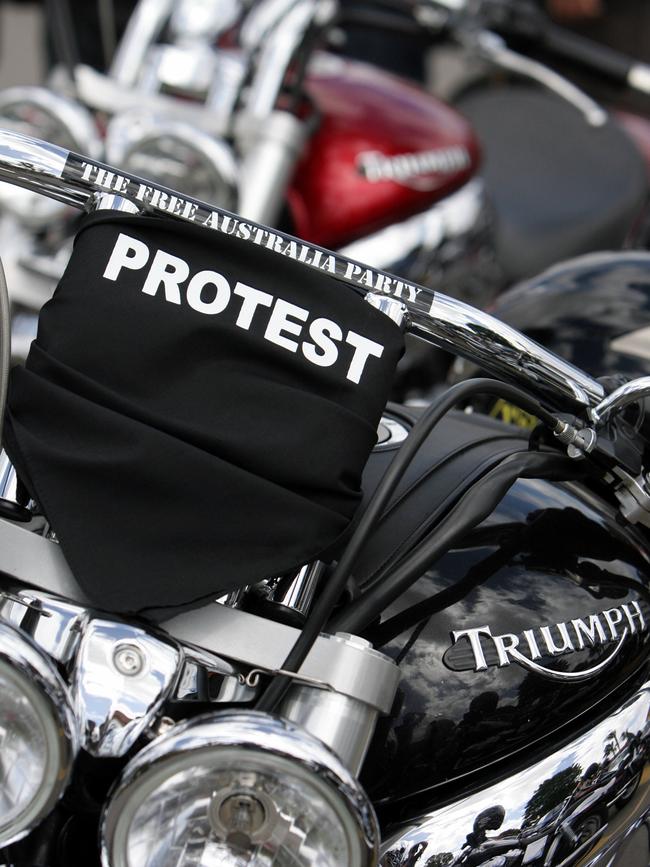
CULTURE OF SILENCE
One of the most fundamental rules of any outlaw bikie gang is never to speak to the police.
The “cone of silence” is why many violent assaults, shootings and murders remain unsolved.
One example was when then Hells Angels Sydney Chapter president Derek Wainohu refused to assist police when one of his members was murdered.
In similar fashion Nomads national president Scott Orrock told police he would “not break code of silence” when he was shot by a fellow member in a Kings Cross strip club in 2006.
One Comanchero who was brazley shot at a motorcycle expo in 2009 to this day has refused to speak to police.
TATTOOS
The strict belief in rules even mean that a bikies tattoos must follow an order too.
For example, in The Finks a member can’t get any kind of bikie tattoo until they’ve been a member for at least one year.
And you have to be a member for five years before you can even acquire a “small” club tattoo.
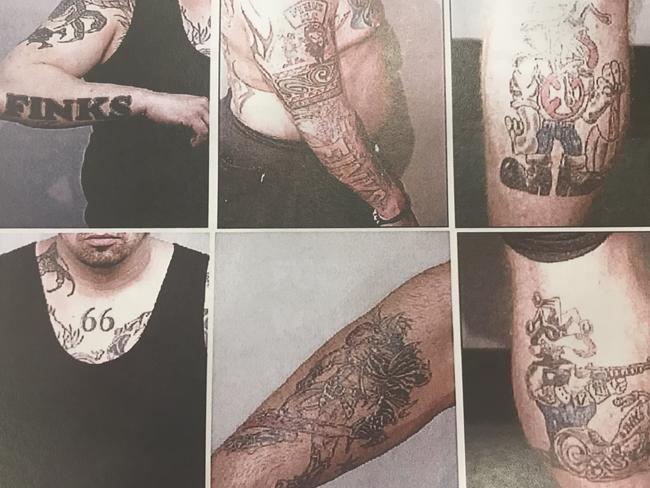
Only life members — those who have served for 10 years at least — can “acquire a full back tattoo depicting Finks colours”.
The rules around what type of tattoos a member can acquire is heavily monitored,
In some examples, members have had tattoos burnt off as a punishment.
Most gang members are also required to have their tattoos removed if they leave a club and in the case of the Hells Angels, exiting gang members have to get an “X” tattooed on them with the date they left.
“The limitations placed on who is allowed to acquire and display a “Finks” tattoo again reinforces the attitudes of “exclusivity” of membership,” the court documents say.
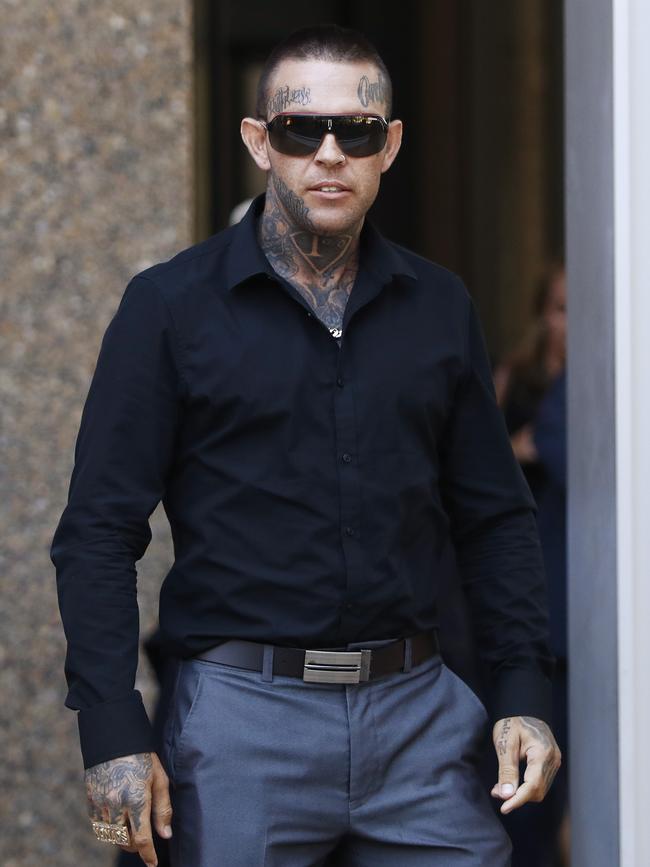
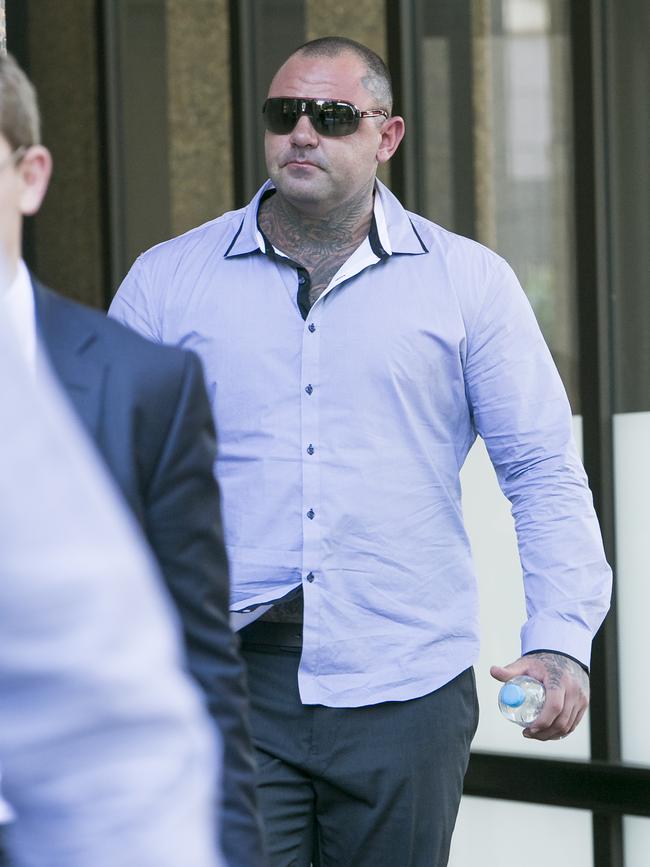
THE WAY OF THE GUN
The only thing bikies love as much as motorcycles are guns.
The dossier says “firearms are a significant part” of the culture.
“(They) regularly use images of firearms and violent slogans on their ‘club’ clothing and to decorate their clubhouses,” it says.
“This attitude is reflected in their willingness to use firearms and violence to attack rivals and settle disputes”.
The dossier warns bikies gangs are showing an “increased propensity” to sore mass amounts of guns so they are “close to hand during inter-gang conflicts’.
SURVEILLANCE & COUNTER SURVEILLANCE
A lot of clubhouses have heavy fortifications and surveillance systems including CCTV and alarm systems.
Windows are darkened or have metal roller doors and are sometimes they’re completely painted over to hide what goes on inside.
One of the tasks of a nominee can be to guard the clubhouse perimeter.


Deer in the headlights or really good cop? Who is Karen Webb
Karen Webb has become our most divisive public servant since she was appointed NSW’s first female Police Commissioner in 2021. With her exit from the job looming, here’s the inside story of her time in the role.
Everyday heroes: Regional NSW residents land Oz Day honours
Not all heroes wear capes – and it couldn’t be more true for these everyday champions from Regional New South Wales who have been honoured this Australia Day. See the full list.